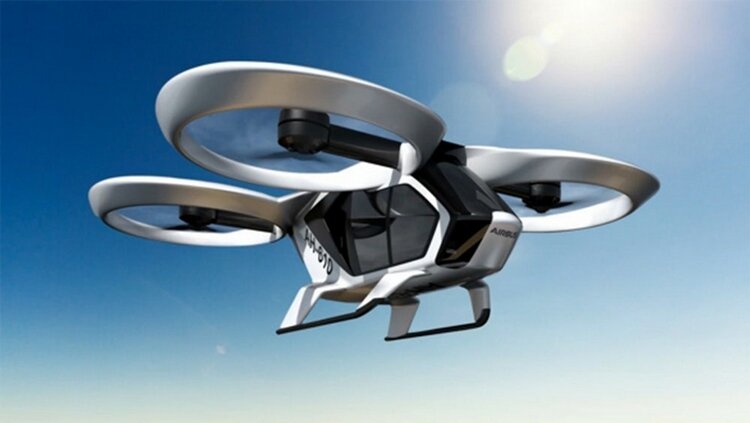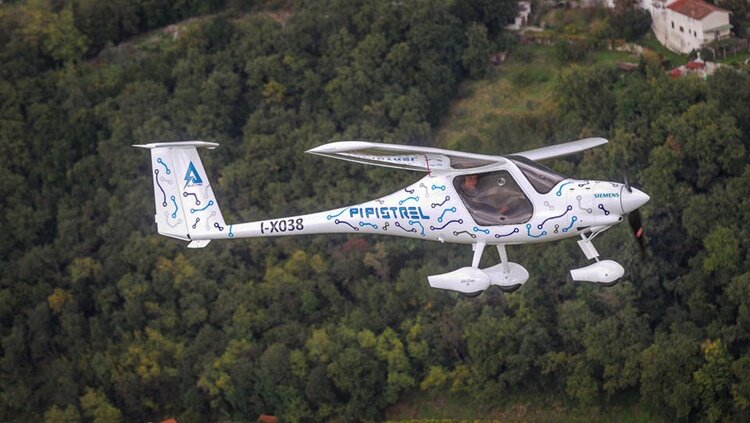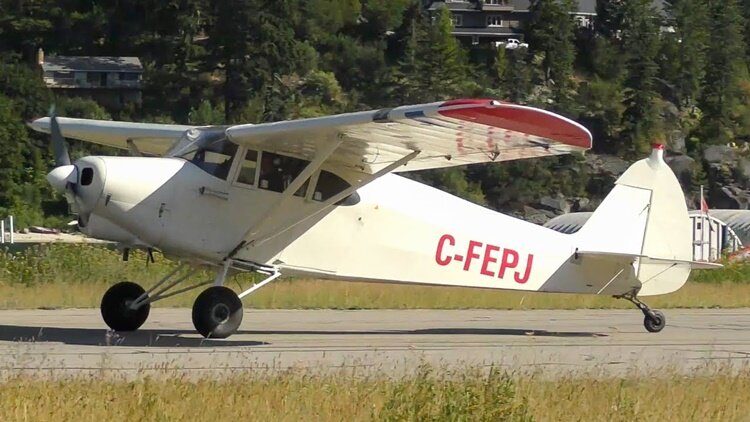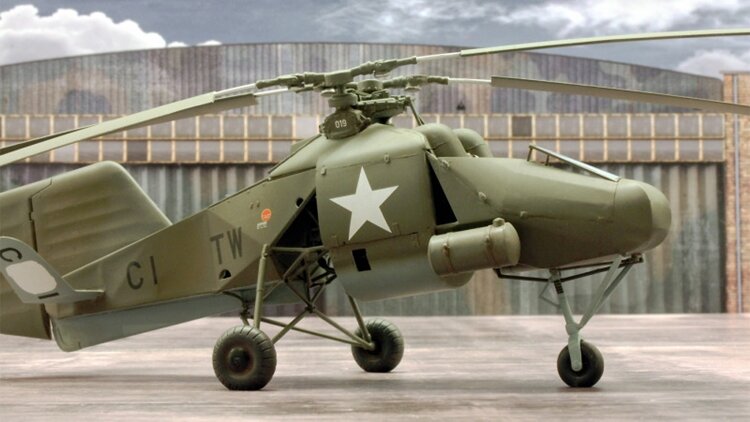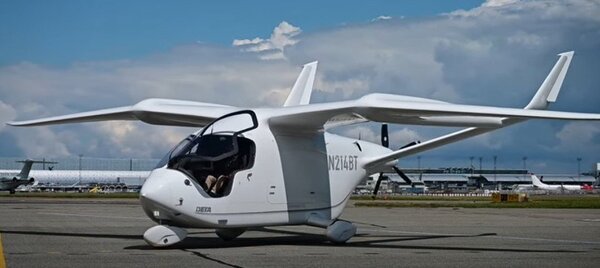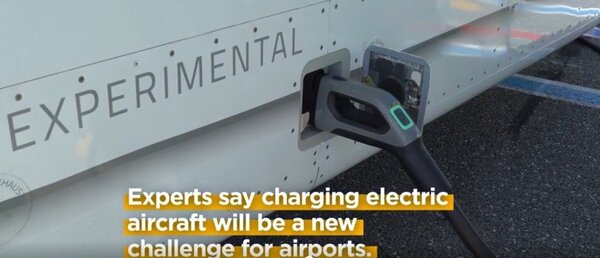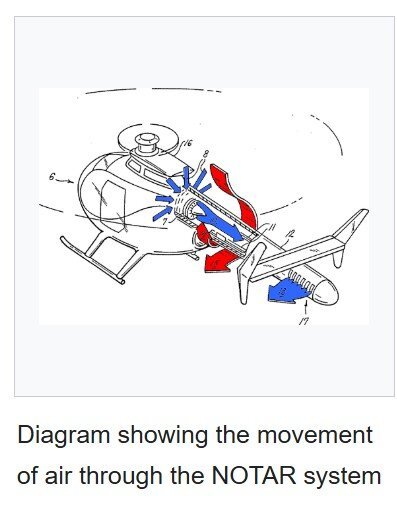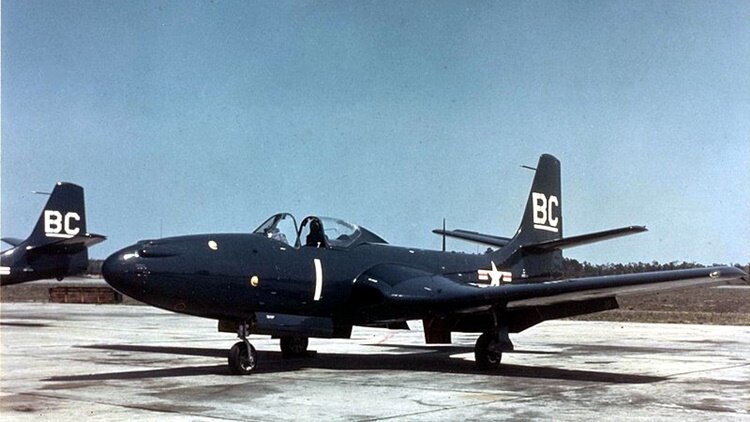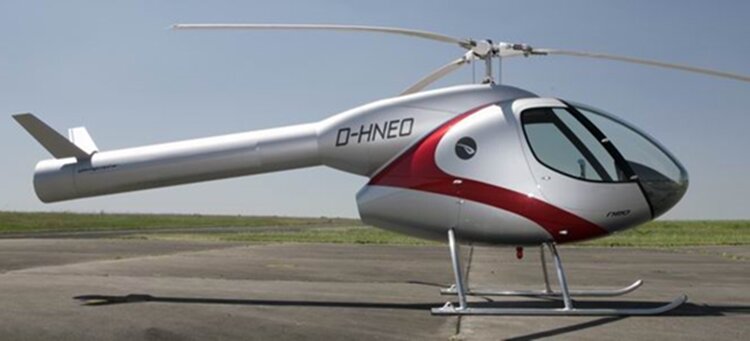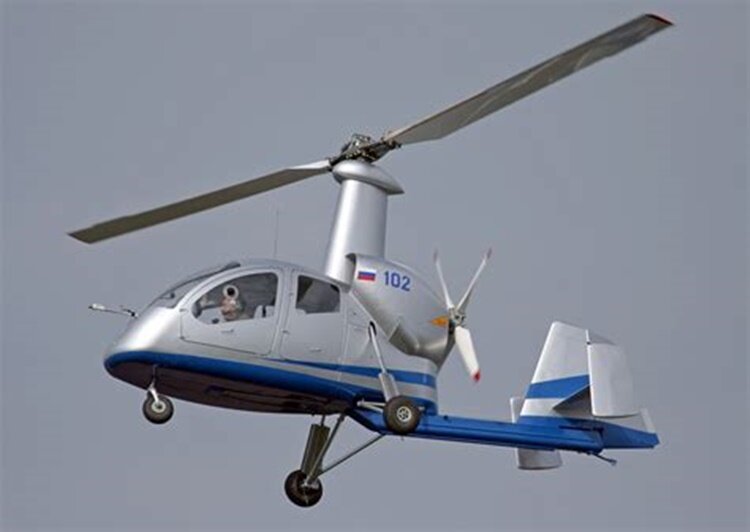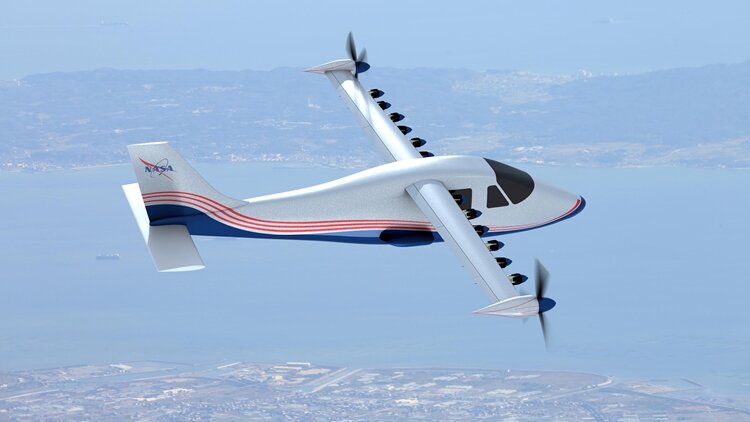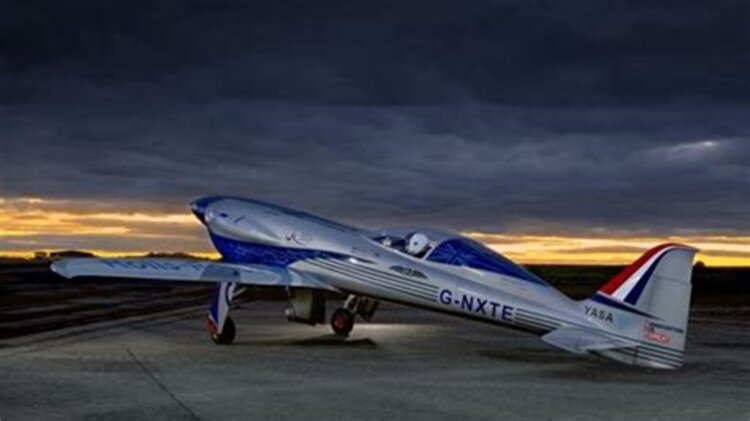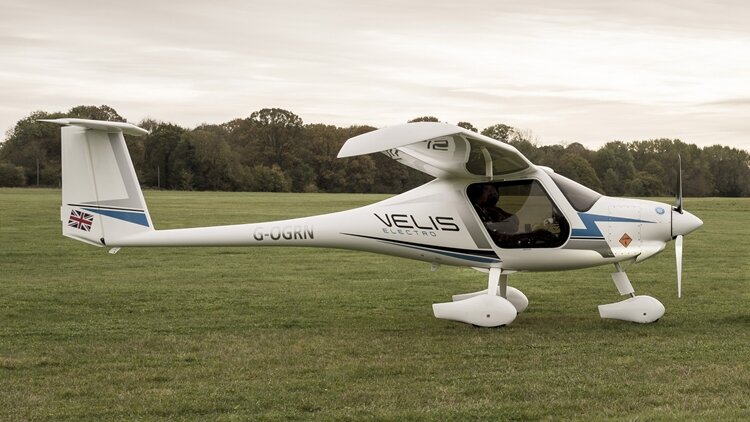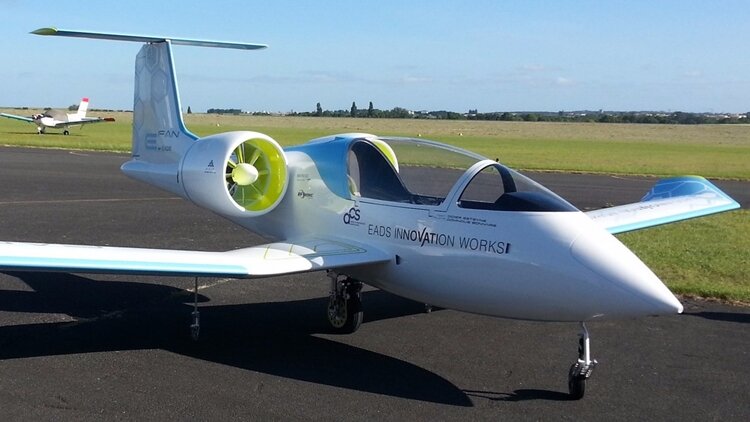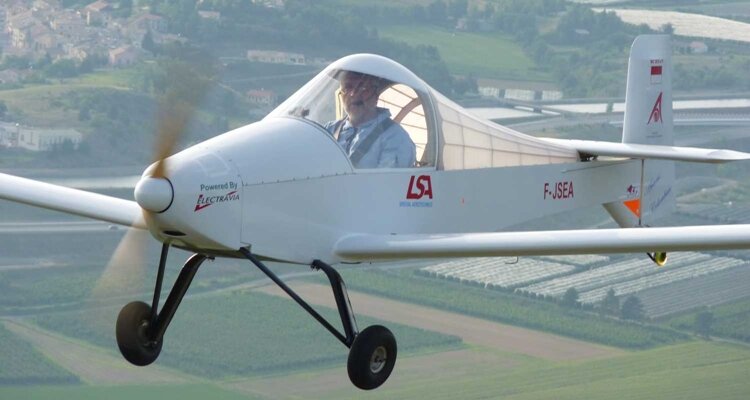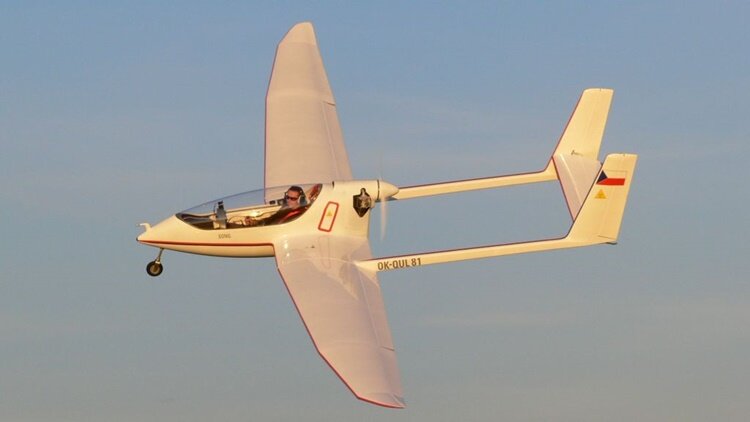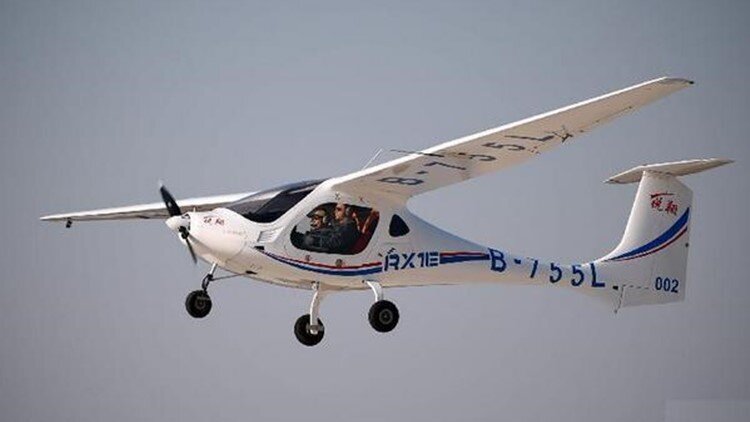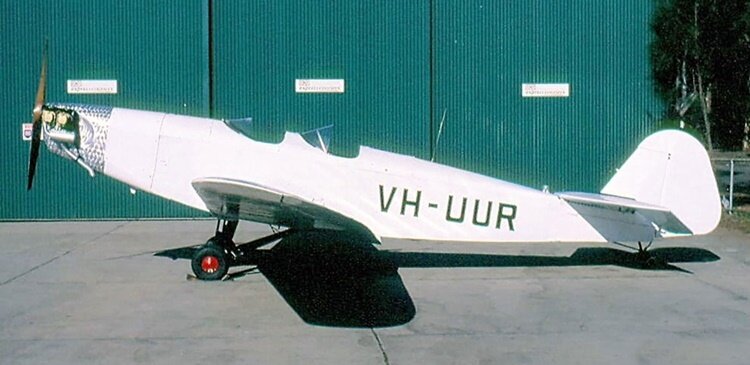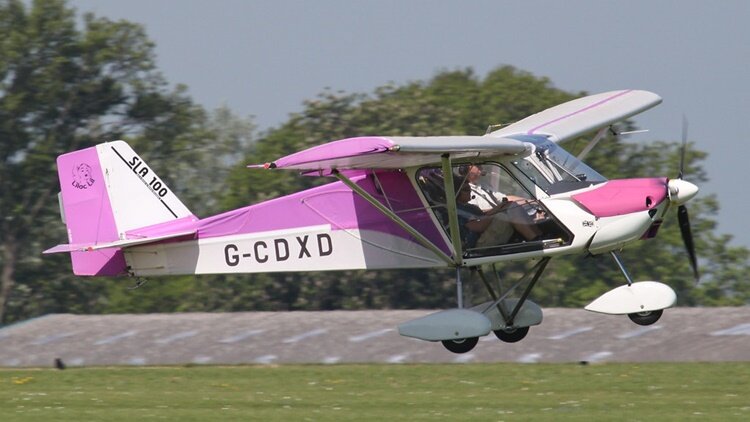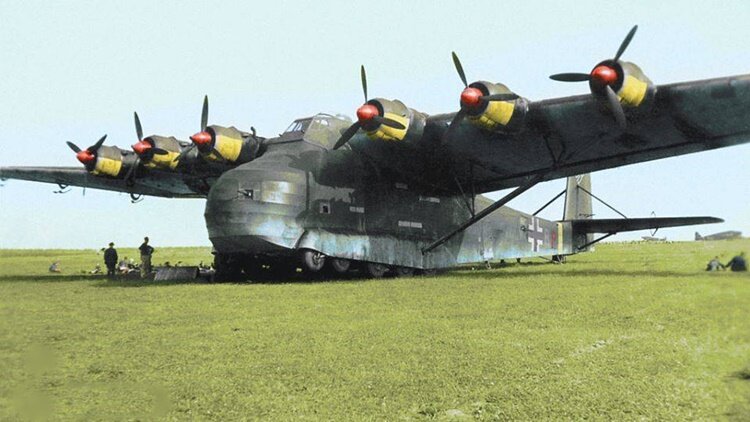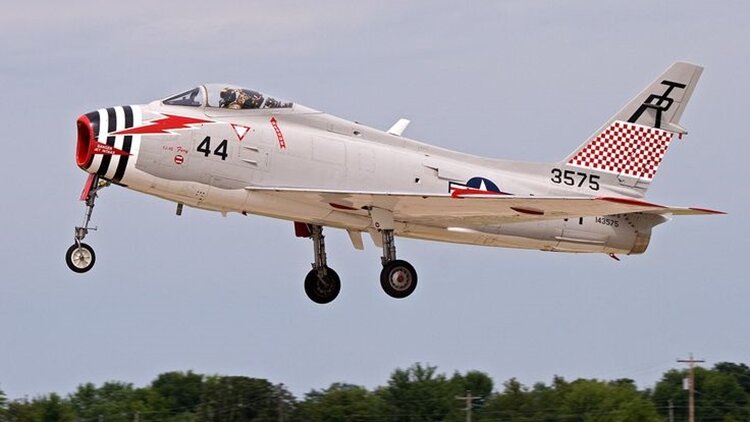-
Posts
7,894 -
Joined
-
Last visited
-
Days Won
71
Content Type
Profiles
Forums
Gallery
Downloads
Blogs
Events
Store
Aircraft
Resources
Tutorials
Articles
Classifieds
Movies
Books
Community Map
Quizzes
Videos Directory
Everything posted by red750
-
The Airbus CityAirbus is a multinational project by Airbus Helicopters to produce an electrically powered VTOL personal air vehicle demonstrator. It is intended for the air taxi role, to avoid ground traffic congestion. The CityAirbus follows other Airbus Urban Air Mobility initiatives: Skyways to deliver packages by UAVs on the National University of Singapore campus, the A³ Vahana single-passenger, self-piloted VTOL aircraft and the A³ Voom on-demand shared helicopter booking service app by Airbus. A 2015 feasibility study confirmed the design's operating costs and that it could meet safety requirements.Full-scale testing of the ducted propeller drivetrain was completed in October 2017.Type certification and commercial introduction are planned for 2023. The iron bird systems test prototype was completed and powered on in December 2017 on a test bench in Taufkirchen, Germany, to test the propulsion system chain, flight controls and propeller dynamic loads, verifying the electric, mechanical and thermal dynamics before being installed on the flight demonstrator by mid-2018. The first structural parts for the demonstrator were produced by Airbus Helicopters. The aircraft's first uncrewed flight was on 3 May 2019. Crewed flights have been planned for 2019.[5] 31 August 2020 the CityAirbus demonstrator moved from Donauwörth to Manching near Ingolstadt in Bavaria. After 242 flights over 1,000 km (540 nmi) in total with the Vahana and CityAirbus demonstrators, Airbus updated the CityAirbus project in September 2021. The new configuration boasts a fixed wing, a V-tail, and eight electric propellers without moving surfaces or tilting parts. It should carry up to four passengers over 80 km (43 nmi) at 120 km/h (65 kn) with sound levels below 65 dB(A) during fly-over and below 70 dB(A) during landing. First flight is planned for 2023 and certification is expected around 2025. As of mid-2025, one test flight has been advertised. EASA is already working on a special condition VTOL (SC VTOL) means of compliance (MOC) to certify eVTOL aircraft. The final version of the MOC for eVTOLs will use newly developed Eurocae standards. The second flight control computer will be developed in collaboration with Diehl Aviation and Thales. The multirotor is intended to carry four passengers, with a pilot initially and to become self-piloted when regulations allow.The overall system is being developed in Donauwörth, with the electrical propulsion system built in Ottobrunn/Munich.The use of four ducted fans contribute to safety and low acoustic footprint.The fully integrated drivetrain has eight propellers and eight 100 kW (130 hp) Siemens SP200D direct-drive electric motors.The fixed pitch propellers are controlled by their RPM.The four electric batteries total 110 kWh (400 MJ), weigh 500 kg[10] and can produce a combined output four times 140 kW (190 hp). The design should cruise at 120 km/h (65 kn) on fixed routes with 15 minutes endurance.
-
The Siemens-FlyEco Magnus eFusion is a German hybrid diesel-electric aircraft that was designed by Siemens and FlyEco, introduced at the AERO Friedrichshafen show in 2018. The aircraft is intended for series production as a ready-to-fly design. The design was first flown on 11 April 2018 in Hungary. On 31 May 2018, the prototype crashed in Hungary, while on a training flight, killing its two occupants. The aircraft featured a cantilever low-wing, a two-seat side-by-side configuration enclosed cockpit under a bubble canopy, fixed tricycle landing gear, and a single engine in tractor configuration. The aircraft was made from composites. The power train consisted of a Siemens SP55D electric motor which was intended to be powered by batteries for take-off and landing. A FlyEco three-cylinder diesel engine, derived from a Smart Car engine, with common rail injection and electronic controls, was intended to recharge the batteries in flight for extended range. The prototype crashed in Hungary on 31 May 2018 killing both occupants. The aircraft was on a training flight at the time. The accident investigation concluded that the crash was most likely due to pilot error in causing a high bank-angle stall close to the ground.
-
Damn web image searches. You put in a search criteria, and they find images with only one word of the criteria. Error removed.
-
The Pipistrel Taurus Electra is an electric powered version of the Pipistrel Taurus self launching glider. Refer Gliders section.
-
The Pipistrel WATTsUP is an electric aircraft proof-of-concept trainer design that was built in Slovenia by Pipistrel. The aircraft is based upon the Pipistrel Alpha Trainer, which was itself related to the Pipistrel Sinus and Virus designs. The WATTsUP was first publicly shown at the Salon de Blois airshow, in France on 30 August 2014. The proof of concept resulted in the Pipistrel Alpha Electro production aircraft. The WATTsUP is a high-wing, cantilever monoplane of pod-and-boom configuration with a T-tail. The cabin has two seats in side-by-side configuration. The WATTsUP is powered by an 85 kW (114.0 hp) electric motor developed by Siemens AG, that weighs just 14 kg (31 lb). The initial climb rate is over 5.1 m/s (1,000 ft/min). The manufacturer claims the electric motor produces more power than a Rotax 912 and can be fully charged in about one hour. The airplane is expected to be capable of flying for about one hour with a 30-minute reserve and it is most efficient in the traffic pattern where as much as 13 percent of the energy is recuperated during each approach. The initial base price is intended to be less than 100,000 Euros.
-
The Javelin V6 STOL is an American STOL homebuilt aircraft that was designed and produced by Javelin Aircraft of Wichita, Kansas. When it was available the aircraft was supplied in the form of plans for amateur construction. The V6 STOL consists of plans to power an existing certified Piper PA-20 Pacer airframe with a Ford Motor Company V6 engine and moving it from the Certified Category to the Experimental Amateur-built category. The aircraft features a strut-braced high wing, a four-seat enclosed cabin accessed via doors, fixed conventional landing gear and a single engine in tractor configuration. Since it uses a standard Piper Pacer airframe, the aircraft is made from welded steel tubing, covered in doped aircraft fabric. Its 32.00 ft (9.8 m) span wing employs a USA 35B airfoil, mounts flaps and has a wing area of 168.00 sq ft (15.608 m2). The standard conversion installs a 230 hp (172 kW) Ford V6 powerplant, driving a fixed pitch propeller, although engines of up to 300 hp (224 kW) can be employed. The 230 hp (172 kW) engine gives the aircraft a sea level, standard day takeoff distance of 150 ft (46 m) and a landing distance of 300 ft (91 m). The V6 STOL has a typical empty weight of 1,200 lb (540 kg) and a gross weight of 2,200 lb (1,000 kg), giving a useful load of 1,000 lb (450 kg). With full fuel of 36 U.S. gallons (140 L; 30 imp gal) the payload for pilot, passengers and baggage is 784 lb (356 kg). In January 2014, 14 examples were registered in the United States with the Federal Aviation Administration, but a total of 25 had been registered at one time. The manufacturer estimates the time to complete the conversion from the supplied plans as 400 hours.
-
The Flettner Fl 282 Kolibri (Hummingbird) is a single-seat intermeshing rotor helicopter, or synchropter, produced by Anton Flettner of Germany. According to Yves Le Bec, the Flettner Fl 282 was the world's first series production helicopter. The Fl 282 Kolibri was an improved version of the Flettner Fl 265 announced in July 1940, which pioneered the same intermeshing rotor configuration that the Kolibri used. It had a 7.7 litre displacement, seven-cylinder Siemens-Halske Sh 14 radial engine of 110–120 kW (150–160 hp) mounted in the center of the fuselage, with a transmission mounted on the front of the engine from which a drive shaft ran to an upper gearbox, which then split the power to a pair of opposite-rotation drive shafts to turn the rotors. The Sh 14 engine was a venerable, tried-and-true design with low specific power output and low power/weight ratio (20.28 hp/L, 0.54 hp/lb) which could (anecdotally) run for up to 400 hours without major servicing, as opposed to the more powerful 27 litre displacement, nine-cylinder BMW/Bramo Fafnir 750 hp radial engine powering the larger Focke Achgelis Fa 223 helicopter, whose higher output (27.78 hp/L, 0.62 hp/lb), more modern design required moderate maintenance as often as every 25 hours (such as changing spark plugs, etc., well within the norm for modern radial engines of that era). While such a heavy and low-powered engine would work well in a very small craft like the Fi 282, to try and scale it up and use an engine of equivalent power/weight ratio in the 700-1000 hp class would result in a massive and heavy engine leaving little excess capacity for cargo or passengers. 750 hp was the lowest rating that the Fafnir was available in - indeed, it was a low-power, low maintenance design compared with many other engines of this era. The Fl 282's fuselage was constructed from steel tube covered with doped fabric, and it was fitted with a fixed tricycle undercarriage. The German Navy was impressed with the Kolibri and wanted to evaluate it for submarine spotting duties, ordering an initial 15 examples, to be followed by 30 production models. Flight testing of the first two prototypes was carried out through 1941, including repeated takeoffs and landings from a pad mounted on the German cruiser Köln. The first two "A" series prototypes had enclosed cockpits; all subsequent examples had open cockpits and were designated "B" series. In case of an engine failure, the switch from helicopter to autorotation was automatic. Three-bladed rotors were installed on a test bed and found smoother than the vibrating 2-blade rotor, but the concept was not pursued further. The hover efficiency ("Figure of Merit") was 0.72 whereas for modern helicopters it is around 60%. Intermeshing rotors were not used on a mass production helicopter until after World War II. For details of operational history and variants, click here.
-
This is the BETA ALIA CTOL (Conventional takeoff and landing). These images were clipped from a couple of Youtube videos. There is insufficient detail available to complete a full profile. The aircraft is initially a cargo aircraft, but a 4 passenger version is in the works. It has just completed its first flight in Denmark. It has a top speed of 241 kph and a range of 622 km. An EVTOL version is also under development.
-
It uses the NOTAR (NO TAil Rotor system, pioneered by McDonnell Douglas, forcing air out through a rotating duct which can be positioned to exert the required pressure in the required direction. The duct can be seen in the middle photo. M-D used it with jet engines, I don't know what supplies the air pressure in this instance.
-
The McDonnell FH Phantom is a twinjet, straight-wing, carrier-based fighter aircraft designed and first flown during late World War II for the United States Navy. As a first-generation jet fighter, the Phantom was the first purely jet-powered aircraft to land on an American aircraft carrier and the first jet deployed by the United States Marine Corps. Although only 62 FH-1s were built it helped prove the viability of carrier-based jet fighters. As McDonnell's first successful fighter, it led to the development of the follow-on F2H Banshee, which was one of the two most important naval jet fighters of the Korean War; combined, the two established McDonnell as an important supplier of navy aircraft. McDonnell chose to bring the name back with the third-generation, Mach 2-capable McDonnell Douglas F-4 Phantom II, the most versatile and widely used Western combat aircraft of the Vietnam War era. The FH Phantom was originally designated the FD Phantom, but this was changed as the aircraft entered production. In early 1943, aviation officials at the United States Navy were impressed with McDonnell's audacious XP-67 Bat project. McDonnell was invited by the navy to cooperate in the development of a shipboard jet fighter, using an engine from the turbojets under development by Westinghouse Electric Corporation. Three prototypes were ordered on 30 August 1943 and the designation XFD-1 was assigned. Under the 1922 United States Navy aircraft designation system, the letter "D" before the dash designated the aircraft's manufacturer. The Douglas Aircraft Company had previously been assigned this letter, but the USN elected to reassign it to McDonnell because Douglas had not provided any fighters for navy service in years. McDonnell engineers evaluated a number of engine combinations, varying from eight 9.5 in (24 cm) diameter engines down to two engines of 19 inches (48 cm) diameter. The final design used the two 19 in (48 cm) engines after it was found to be the lightest and simplest configuration. The engines were buried in the wing root to keep intake and exhaust ducts short, offering greater aerodynamic efficiency than underwing nacelles, and the engines were angled slightly outwards to protect the fuselage from the hot exhaust blast. Placement of the engines in the middle of the airframe, behind the center of gravity, required the cockpit with its bubble-style canopy to be placed ahead of the wing, also granting the pilot excellent visibility in all directions. The long nose allowed designers to use tricycle gear, thereby elevating the engine exhaust path and reducing the risk that the hot blast would damage the aircraft carrier deck. The construction methods and aerodynamic design of the Phantom were fairly conventional for the time; the aircraft had unswept wings, a conventional empennage, and an aluminum monocoque structure with flush riveted aluminum skin. Folding wings were used to reduce the width of the aircraft in storage configuration. Provisions for four .50-caliber (12.7 mm) machine guns were made in the nose, while racks for eight 5 in (130 mm) High Velocity Aircraft Rockets could be fitted under the wings, although these were seldom used in service. Adapting a jet to carrier use was a much greater challenge than producing a land-based fighter because of slower landing and takeoff speeds required on a small carrier deck. The Phantom used split flaps on both the folding and fixed wing sections to enhance low-speed landing performance, but no other high-lift devices were used. Provisions were also made for Rocket Assisted Take Off (RATO) bottles to improve takeoff performance. For more details of development. operational history and variants, click here.
-
The Youngcopter Neo (transl. New) is a German NOTAR helicopter that was designed by Björn Jung and is under development by his company, Youngcopter of Mainz. It was first publicly introduced at the ILA Berlin Air Show in 2008. The aircraft is intended to be supplied as a kit for amateur construction. No projected date has been announced for kit deliveries and no pricing has been set as of January 2018. The Neo was designed to comply with the amateur-built aircraft construction rules. The first prototype was completed in 2008 and ground run. By 2010 ground testing had been completed, including rotor system tracking and balancing. The prototype first flew in hovering flight on 31 October 2011 and developmental hover flight testing continued through 2015. The Neo design features a single main rotor, with no tail rotor, a two-seats-in side-by-side configuration enclosed cockpit with a windshield, skid landing gear and a twin-rotor 180 hp (134 kW) Neosis Wankel engine. The aircraft fuselage is composite material monocoque design. Its three-bladed rotor has a diameter of 7.7 m (25.3 ft) and can be folded for hangar storage. The aircraft has a typical empty weight of 385 kg (849 lb) and a gross weight of 640 kg (1,411 lb), giving a useful load of 255 kg (562 lb). With full fuel of 120 litres (26 imp gal; 32 US gal) the payload for the pilot, passenger and baggage is 168 kg (370 lb). The Neo kit under development is intended to be constructed by a person with average mechanical skills. It will not require any welding or composite materials lamination work. The proposed kit will include all sub-assemblies, engine and instruments.
-
The Irkut A-002 is a three-seat, pusher configuration autogyro developed in Russia through the 2000s by the United Constructor Bureau for Light Aircraft team of the Irkutsk Aircraft Production Association (IAPO) "Irkut" as the first independent product. Take-off is possible when wind speed exceeds 8 m/s, otherwise a running start of up to 15 m is necessary. The riveted covering is made of duralumin. The first produced consignment consisted of five autogyros. The A-002M is a further development. The A-002 has an enclosed, streamlined cabin accessed by large, windowed side doors. The two front seats have dual control, and there is a third seat behind. The fully enclosed, pusher-configuration flat-four AviaSmart engine is situated behind the cabin with a pair of cooling air intakes above its roof. The propeller thrustline is at cabin roof height. The two-blade rotor is mounted on a tall streamlined pylon at the rear of the cabin. In flight the rotor is undriven, but it can be spun up by the engine for jump starts made with no take-off run. Without this spin-up, take-off requires a run of 30 m (98 ft). The A-002 has composite tail surfaces mounted on a short boom joined to the bottom of the cabin/engine pod. The fin carries a mass- and horn-balanced rudder and an all-moving tailplane at ⅓ fin height. The A-002 has a fixed, wide track tricycle undercarriage with main wheels on cantilever spring legs. The first flight was on 6 July 2002. Production of five A-002s began in August 2002, but production was halted for further development and no deliveries were made until 2004,. Several revisions were made, including much-enlarged engine air intakes and the addition of endplate fins to the tailpane. The maximum take-off weight (MTOW) of the A-200 increased from 900 to 950 kg (1,980 to 2,090 lb), and both the rotor and fuselage were significantly extended. The more recent A-002M upgrade further raised the MTOW to 1,030 kg (2,270 lb). There have been tests of four- and six-bladed propellers. In 2005 the autogyro project participated in the Russian Innovation Contest where it was declared that at least 150 units should be sold to pay back the project. In 2006 a renewed version with an AviaSmart engine and a new extended main rotor was named A-002M. In 2008 it was declared about the certification of such autogyro type that year according to the actual aviation rules[clarification needed], however, even by 2012 the certificate has not been received yet. In 2010 they published a specification for a heavier version of A-002M at higher cost. The possibility of jump take-off remained, but it is not considered regular any more due to enhanced load on the bearing structure. It was also reported about developing of the unmanned version. One case of the autogyro's experimental operation by the IrkutskEnergo company in 2006 is known; no further cooperation with this company was reported. By late 2003 twenty A-002s had been ordered by Susuman Susumanzoloto OAO, a mining company which had received two, and by Irkutskehenergo OAO, which had received another two for power-line inspections. Five had been delivered by 2007. Variants A-002 (Specifications below) Original version. A-002M Heavier upgrade, specification released 2010.
-
The NASA X-57 Maxwell was an experimental aircraft developed by NASA, intended to demonstrate technology to reduce fuel use, emissions, and noise. The first flight of the X-57 was scheduled to take place in 2023, but the program was cancelled due to problems with the propulsion system. The experiment involved replacing the wings on a twin-engined Italian-built Tecnam P2006T (a conventional four-seater light aircraft) with distributed electric propulsion (DEP) wings, each containing electrically driven propellers. Test flights were initially planned to commence in 2017. The first test phase used an 18-engine truck-mounted wing. The second phase installed the cruise propellers and motors on a standard P2006T for ground- and flight-test experience. Phase 3 tests were to involve the high-lift DEP wing and demonstrate increased high-speed cruise efficiency. The leading-edge nacelles would be fitted, but the high-lift propellers, motors and controllers would not be installed. Phase 4 was to add the DEP motors and folding propellers to demonstrate lift-augmentation. The Leading Edge Asynchronous Propeller Technology (LEAPTech) project is a NASA project developing an experimental electric aircraft technology involving many small electric motors driving individual small propellers distributed along the edge of each aircraft wing. To optimize performance, each motor can be operated independently at different speeds, decreasing reliance on fossil fuels, improving aircraft performance and ride quality, and reducing aircraft noise. The X-57 project was publicly revealed by NASA Administrator Charles Bolden on 17 June 2016 in a keynote speech to the American Institute of Aeronautics and Astronautics (AIAA) at its Aviation 2016 exposition. The plane was named for Scottish physicist James Clerk Maxwell. NASA's first X-plane in over a decade, it is part of NASA's New Aviation Horizons initiative, which will also produce up to five larger-scale aircraft. The X-57 was built by the agency's SCEPTOR project, over a four-year development period at Armstrong Flight Research Center, California, with a first flight initially planned for 2017. In July 2017, Scaled Composites was modifying a first P2006T to the X-57 Mod II configuration by replacing the piston engines with Joby Aviation electric motors, with plans to fly early in 2018. Mod III configuration will move the motors to the wingtips to increase propulsive efficiency. Mod IV configuration will see the installation of the Xperimental, LLC high aspect ratio wing with 12 smaller propellers along its leading edge to augment its takeoff and landing aerodynamic lift. Modified from a Tecnam P2006T, the X-57 would have been an electric aircraft, with 14 electric motors driving propellers mounted on the wing leading edges. All 14 electric motors would be used during takeoff and landing, with only the outer two used during cruise. The additional airflow over the wings created by the additional motors generates greater lift, allowing for a narrower wing. The aircraft would have seated two. It would have had a range of 100 mi (160 km) and a maximum flight time of approximately one hour. The X-57's designers hoped to reduce by five-fold the energy necessary to fly a light aircraft at 175 mph (282 km/h; 152 kn), including a threefold reduction due to switching from piston engines to battery-electric. For more details, click here.
-
As you may have noticed, I asked Ian to add an Electric Aircaft category in the Aircraft Section. While checking Wikipedia for aircraft to include in the profiles, I came across a List of Electric Aircraft. A quick check showed that there are about 80 aircraft in this list. I have compiled a few profiles so far with some more to add. However, many of those listed aircraft are projects which have not made it to prototype stage, or have been cancelled. Others include electric versions of existing ICE aircraft, such as the two-seat Cessna 172 Electric, and electric trikes and self launching gliders. If I find sufficient details to complete a profile, I will add it to the section. In the meantime, I still have more ICE aircraft to add to the other categories. Coincidentally, the current count of profiles is 1872.
-
The Rolls-Royce ACCEL (Accelerating the Electrification of Flight) is an electric aircraft demonstrator developed by Rolls-Royce plc. Rolls-Royce developed the ACCEL as a racing aircraft to gain the all-electric air speed record, targeting over 260 kn (480 km/h). The existing electric aircraft record at that time was 182 kn (337 km/h), set in 2017 by a Siemens powered Extra 330. Designed at Gloucestershire Airport, the project is partly funded by the UK government and involves partners such as electric motor and controller manufacturer YASA Limited and aviation start-up Electroflight. The team aimed to reach the 1931 Schneider Trophy speed, which was won by a R-R-powered Supermarine S.6B, reaching 298 kn (552 km/h). On 15 September 2021, Rolls-Royce announced the aircraft, named Spirit of Innovation, had successfully completed its first flight, flying from MoD Boscombe Down for fifteen minutes. It subsequently reached a top speed of 336 kn (622 km/h), and sustained 300 kn (560 km/h) over 3 km, 287 kn (532 km/h) over 15 km, and was able to climb to 3,000 m (9,800 ft) in 3min 22s. The speeds achieved were accepted as world records for electric aircraft by the Fédération Aéronautique Internationale in January 2022. The 7.3 m (24 ft) span aircraft is powered by triple stacked 200kW YASA 750R axial flux motors with a high power density driving a single three-blade propeller spinning at 2,400 RPM. The 750 Volt, 216 kWh battery has 6,480 cells, with cork insulation and active cooling. Battery output power will be 500 hp (373 kW) continuous, reaching 750 kW (1,010 hp) at maximum power.. It is designed to have the highest energy density for an aircraft, and should allow a 170 nmi (310 km) range. The aircraft is derived from the carbon fibre Sharp Nemesis NXT racer, which has a cruising speed of 282 kn (522 km/h) with a 350 hp (261 kW) piston engine, but can reach 355 kn (657 km/h) with a highly tuned engine. The maximum take-off weight of the NXT is 1,200 kg. Rolls-Royce intend the battery, motors and control equipment in a production system to weigh the same as the regular engine and fuel tank in a conventional aircraft, but the battery pack alone in the Spirit of Innovation currently weighs 1350 kg. The aircraft's livery was designed by the renowned Italian designer Mirco Pecorari, known for his expertise in aviation aesthetics and branding. The aircraft is in development and testing, so specifications areestimatews, and are limited.
-
The Pipistrel Velis Electro is a Slovenian light aircraft, designed and produced by Pipistrel of Ajdovščina. The aircraft was EASA CS-LSA fully electric type certified in June 2020 and it is intended primarily for the training aircraft role, particularly multiple successive take-off and landings at the airfield. The design is the first type certified electric aircraft and is supplied complete and ready-to-fly. The aircraft is based on the Pipistrel Virus airframe and features a cantilever high-wing, a two-seats-in-side-by-side configuration in an enclosed cabin accessed via doors. It has a stick shaker and fixed tricycle landing gear and a single electric motor in tractor configuration. The airframe is predominantly made from composite materials. Its 10.71 m (35.1 ft) span wing, has an area of 9.5 m2 (102 sq ft), an aspect ratio of 12.03:1, an IMD 029-b airfoil and mounts three-position flaps, with settings of 0°, 8° and 19°. The sole approved powerplant is the liquid-cooled Pipistrel E-811 electric motor, rated at 57.6 kW (77 hp) at 2500 rpm for 90 seconds for take-off and 49.2 kW (66 hp) at 2350 rpm for continuous operation. The motor was developed in conjunction with the Slovenian engineering companies Emrax and Emsiso. It is powered by a 345 VDC, 20 kWh battery pack, in two 70 kg (150 lb) each, liquid-cooled lithium batteries by Pipistrel, connected in parallel for fault tolerance. One battery is mounted in the nose and one behind the cabin for balance. They take 2 hours to recharge from 30% to 100% capacity, and allow an endurance of up to 50 minutes plus 10 minutes of VFR reserves when flying in proximity of the aerodrome. The motor radiator is mounted in the nose, which necessitates a different engine cowling from the Virus design. The battery radiator is mounted in the rear. The to the liquid cooling and the weight of the battery unit, the batteries are not swappable, unlike the battery replacement system in the Alpha Electro. The-off is not allowed when battery state of charge (SoC) is below 50%. The aircraft has a built-in continuous health-monitoring system displaying the estimated 'age' of the battery, and the battery must be charged using proprietary equipment. The E-811 is the first certified electric aircraft motor and was certified by EASA on 18 May 2020. The Velis Electro has a maximum noise level of 60 dBa. The aircraft has an empty weight of 428 kg (944 lb) and a gross weight of 600 kg (1,300 lb), giving a useful load of 172 kg (379 lb). For more details of development and operational history, click here. Note: There is an electric variant of the Pipistrel Alpha Trainer, which is covered in Recreational (3 Axis) section.
-
The Airbus E-Fan is a prototype two-seater electric aircraft that was under development by Airbus. It was flown in front of the world press at the Farnborough Airshow in the United Kingdom in July 2014. The target market was intended to be pilot training, but production of the aircraft was cancelled in April 2017. Airbus Group developed this electric aircraft with Aero Composites Saintonge. The aircraft uses on-board lithium-ion batteries to power the two electric motors and can carry one pilot and one passenger. A test flight was conducted in April 2014 at Bordeaux–Mérignac Airport, France, landing in front of a large audience, the French Minister of Industry Arnaud Montebourg being one of them. At the 2014 Farnborough Airshow, Airbus announced that the E-Fan 2.0 would go into production by 2017 with a side-by-side seating layout.[3] Airbus stated at that time that there are plans for development of a commercial regional aircraft in the near future. The E-Fan is an all-electric two-seat twin-motor low-wing monoplane of composite material structure. It has a T-tail and a retractable tandem landing gear with outrigger wheels. The two motors are mounted on either side of the rear fuselage. Two production variants were initially planned, a two-seater E-Fan 2.0 for use as a trainer, and the E-Fan 4.0 four-seat touring aircraft. The E-Fan 4.0 appears identical to the E-Fan apart from a fuselage stretch. To increase flight duration the planned E-Fan 4.0 would have had a hybrid-electric system that will have a small engine to charge the battery (like a range extender), which would have increased its duration from 2 hours to 3.5 hours. The first flight of the E-Fan 2.0 was originally planned for 2017 and the E-Fan 4.0 for 2019. The E-fan is of all-composite construction and is propelled by two ducted, variable-pitch fans spun by two electric motors totaling 60 kW of power. Ducting increases thrust while reducing noise, and having the fans mounted centrally provides better control. The motors moving the fans are powered by a series of 250-volt lithium polymer battery packs made by South Korean company Kokam. The batteries are mounted in the inboard section of the wings. They have enough power for one hour and take one hour to recharge. An onboard backup battery is available to make an emergency landing if power runs out while airborne. The E-fan's landing gear consists of a retractable fore and aft wheel, and a fixed wheel under the wings. Unusually for an aircraft, the main wheel is powered by a 6 kW electric motor, which allows the plane to be taxied without the main motors, and is able to accelerate it to 60 km/h (37 mph; 32 kn) for takeoffs. Having the takeoff run performed by the undercarriage relieves some of the burden on the flight motors. In December 2014 Airbus announced that DAHER-SOCATA would complete the design work on the aircraft and certify it. VoltAir, an Airbus subsidiary, developed the initial prototype and worked with Daher-Socata during the testing phase as the project manager. At this point the aircraft became the VoltAir E-Fan. In April 2017 Airbus cancelled production of the E-Fan, preferring to concentrate on a proposed hybrid-electric, regional jet-sized aircraft, with an initial service date of 2030. On 9 July 2015, the E-Fan crossed the English Channel from Lydd Airport to Calais–Dunkerque Airport. It was flown by Didier Esteyne, the chief engineer of the E-Fan. Initially this was claimed as the first electric aircraft to cross the English Channel, but it has since been pointed out that there were previous such flights, including MacCready Solar Challenger as long ago as 1981, and Airbus now say it was the "first all-electric two-engine aircraft" to make the crossing. Siemens has sponsored electric equipment on the E-fan, but not motors. Variants E-Fan Two-seat concept aircraft and technology demonstrator, first flown March 2014. E-Fan 2.0 Proposed all-electric two-seat production variant, initially forecast to fly in 2017. E-Fan 4.0 Proposed hybrid-electric four-seat variant, to fly 2019; a kerosene fuelled generator would have extended endurance from 2 h to 3 h 30 min. E-Thrust Proposed 90-seat regional jet based on the principles of the E-Fan.
-
Report this morning that the CVR shows the PIC ask "Why did you cutoff the fuel?" The CP said "I didn't." No tome to rrestart.
-
Electravia - Helices E-Props is a French aviation manufacturer based in Vaumeilh, specializing in the non-certified light aviation sector. At one time it produced electric propulsion systems and now designs and manufactures carbon fibre propellers for light aircraft. The company was originally organized as an association called APAME to build and fly electric aircraft. It first flew its BL1E Electra on Sunday, 23 December 2007 at Aspres sur Buech airfield, Hautes Alpes, France. Test pilot Christian Vandamme flew the electric-powered, open-cockpit, strut-equipped airplane for 48 minutes, covering 50 km (31 mi). The BL1E Electra is powered by an 18 kW (24 hp) disk-brushed electric engine driven by a 47 kg (104 lb) KOKAM Lithium polymer battery. The BL1E Electra was the first registered aircraft in the world powered by an electric motor running on batteries. The company was founded on 19 September 2008 by Anne Lavrand, Jérémie Buiatti and Christian Vandamme. At the time of its founding it mainly produced electric motors for light aircraft. Starting in 2008, Electravia began designing and manufacturing carbon fibre aircraft propellers, including fixed pitch, ground-adjustable pitch and variable pitch models. Propellers for paramotors, ultralights, light aircraft and UAV are made in the 1,700 m2 (18,000 sq ft) workshop on Sisteron's airfield (LFNS). E-Props propellers claim to be the lightest on the market. No specificatios or performance available for this aircaft. The company has stopped making aircraft and is concentrating on carbon fibre propellers.
-
The Electric Aircraft Corporation ElectraFlyer-ULS is an American electric ultralight motor glider, designed by Randell Fishman and produced by the Electric Aircraft Corporation of Cliffside Park, New Jersey, introduced in late 2012. The aircraft is supplied complete and ready-to-fly. The ElectraFlyer-ULS was designed to comply with the US FAR 103 Ultralight Vehicles rules, including the category's 254 lb (115 kg) empty weight limit. The design has an empty weight of 245 lb (111 kg). The design features a cantilever mid-wing, a single-seat under a bubble canopy, a twin boom tail, fixed tricycle landing gear and a single electric motor in pusher configuration. The aircraft is made from carbon fiber and foam composite materials. The motor and drive train are supplied by the Electric Aircraft Corporation in the US, while the airframe is built under contract by Airsport in the Czech Republic and is adapted from an existing design, the Airsport Song. The drivetrain includes a Fishman-designed 20 hp (15 kW) motor, electronic controller and 3.3 kWh LiPo battery pack. An additional 3.3 kWh battery pack is a US$5,000 option, which gives a two-hour endurance. A two-bladed fixed pitch propeller is standard equipment, but a folding carbon fiber propeller is optional.
-
The Liaoning Ruixiang RX1E is a Chinese two-seat electric aircraft, designed by the Liaoning General Aviation Academy at Shenyang Aerospace University and manufactured by the Liaoning Ruixiang General Aviation Manufacture Company Limited of Shenyang. The aircraft was first shown at the Zhuhai China Airshow, in November 2012 and in 2015 at the AERO Friedrichshafen show in Germany. The result of a three-year development process started in June 2012, the RX1E is an electric powered, two-seat side-by-side configuration, carbon fibre composite construction aircraft with a T-tail and tricycle landing gear and is one of the first electric airplanes in production. The company said in April 2015 that they had 28 orders for the design. The manufacturer claims that the aircraft conforms to US Light-sport Aircraft requirements and has a Type Design Approval from the Civil Aviation Administration of China, issued in 2015. As of September 2016 it does not appear on the US Federal Aviation Administration list of approved LSAs and, in fact, the category excludes electric-powered aircraft and requires a single reciprocating engine. The first two customer aircraft were delivered in June 2015. The launch customer was the Liaoning Ruixiang General Aviation Co., which will employ the aircraft in the flight training role. An improved version, the RX1E-A, was first flown in November 2017 and features a two-hour endurance and a new ballistic parachute design. The original RX1E has a 45-minute endurance.
-
Klemm L 25, later Klemm Kl 25 is a successful German light leisure, sports and training monoplane aircraft, developed in 1928. More than 600 aircraft were built, and manufacturing licenses were sold to the United Kingdom and the United States. With a low cantilever wing, fixed landing gear, and two open cockpits, the aircraft was developed by Hanns Klemm, who used his previous design, the Daimler L20, as a starting point. It first flew on a 20 hp (15 kW) Daimler F7502 engine. About 30 different versions of the Kl 25 were made, and these were equipped with engines ranging from 32 to 70 kW (43 to 94 hp). The fuselage was covered with plywood. Depending on the model, the aircraft's weight was 620 to 720 kg (1,367 to 1,587 lb), and it had a 10.5 to 13 m (34 to 43 ft) wingspan. Takeoff was achieved at only 50 km/h (31 mph) and the maximum speed was between 150 and 160 km/h (93 and 99 mph). In relation to similar aircraft of the time, assembly was very easy, and this made it a very popular aircraft. According to the sales brochures, only 25% of the engine's power was needed to keep the aircraft flying, compared to biplanes of the period, which required 50% engine power. About 600 were built in Germany between 1929 and 1936, serving with various flight training organizations, with either wheels, skis, or floats. 15 were sold to Britain before the Second World War, being fitted with a variety of domestic engines, while 28 more were built by British Klemm Aeroplane Company as the B.A. Swallow. Production in the United States was carried out by the Aeromarine-Klemm Company which enjoyed moderate success, as well as developing models for the American market, in isolation from the parent company, with about 120 built of all models. Klemm L 25s took part in many competitions, among others in International Touring Aircraft Competitions (Europa Rundflug) in 1929 (best 4th place) and in 1930 (best 2nd and 3rd places, L 25E variant). A total of about 720 units were buillt. Variants Germany L 25 a Built between 1927 and 1929, equipped with a 22 PS (21.7 hp; 16.2 kW) Daimler F 7502 engine L 25 I Built between 1928 and 1929, equipped with a 45 PS (44.4 hp; 33.1 kW) Salmson AD.9 engine L 25 Ia (Specifications below) L 25 IW Floatplane version of the Ia, with two wooden floats supported by steel-tube struts in inverted 'W' configuration L 25 b Built in 1931, equipped with a 22 PS (21.7 hp; 16.2 kW) Daimler F 7502 engine L 25 b VII Built in 1931, equipped with a 60 PS (59.2 hp; 44.1 kW) Hirth HM 60 engine L 25 d II Built in 1933, equipped with an 88 PS (86.8 hp; 64.7 kW) Siemens-Halske Sh 13a engine Klemm L.25 d VII R built in 1934 L 25 d VII Equipped with an 80 PS (78.9 hp; 58.8 kW) Hirth HM 60R engine L 25 IVa Equipped with Armstrong Siddeley Genet engine VL 25 Va Three-seater variant, with a closed canopy, equipped with 103 PS (101.6 hp; 75.8 kW) Argus As 8 straight engine[2] L 25 Ve (see L 25E) For Europa Rundflug 1930 L 25E (L 25 Ve) Special competition variant (E for Europa Rundflug 1930), with a closed canopy, smaller span, equipped with a 103 PS (101.6 hp; 75.8 kW) Argus As 8 United Kingdom British Klemm Aeroplane Company B.K. Swallow British Aircraft Manufacturing Co. B.A. Swallow II United States Aeromarine-Klemm AKL-25 Aeromarine-Klemm AKL-70 Aeromarine-Klemm Model 70 Trainer
-
The Medway SLA100 Executive, also called the Medway SLA 100 Executive, is a British ultralight aircraft designed and produced by Medway Microlights, of Rochester, Kent. The aircraft is supplied as a kit for amateur construction or as a complete ready-to-fly-aircraft. The aircraft was designed to comply with the British BCAR Section "S" and the Fédération Aéronautique Internationale microlight rules. It features a strut-braced high-wing, a two-seats-in-side-by-side configuration enclosed cockpit, fixed tricycle landing gear and a single engine in tractor configuration. The SLA100 is made from bolted-together aluminium tubing, with its flying surfaces covered in Dacron sailcloth. Its 9.7 m (31.8 ft) span wing has an area of 13.8 m2 (149 sq ft) and is supported by V-struts with jury struts. Standard engines available are the 80 hp (60 kW) Rotax 912UL and the 100 hp (75 kW) Rotax 912ULS four-stroke powerplants. The SA100 has been certified to the UK BCAR Section "S" standard. Variants SLA100 Executive Standard model with a 9.7 m (31.8 ft) wing span SLA100 Clipper Clipped wing model, introduced in 2010 and still under development in 2015.
-
The Messerschmitt Me 323 Gigant ("Giant") was a German military transport aircraft of World War II. It was a powered variant of the Me 321 military glider and was the largest land-based transport aircraft to fly during the war. In total, 213 were made, with 15 being converted from the Me 321. The Me 323 was the result of a 1940 German requirement for a large assault glider in preparation for Operation Sea Lion, the projected invasion of Great Britain. The DFS 230 light glider had already proven its worth in the Battle of Fort Eben-Emael in Belgium (the first ever assault by gliderborne troops), and would later be used in the invasion of Crete in 1941. However, in order to mount an invasion across the English Channel, the Germans would need to be able to airlift vehicles and other heavy equipment as part of an initial assault wave. Although Operation Sea Lion was cancelled, the requirement for a heavy air transport capability remained, with the focus shifting to the forthcoming Operation Barbarossa, the invasion of the Soviet Union. Early in 1941, as a result of feedback from Transport Command pilots in Russia, the decision was taken to produce a motorized variant of the Me 321, to be designated Me 323. French Gnome et Rhône GR14N radial engines, rated at 1,180 PS (1,164 hp, 868 kW) for take-off as used in the Bloch MB.175 aircraft were chosen for use. This would reduce the burden on Germany's strained industry. Like the Me 321, the Me 323 had massive, semicantilever, high-mounted wings, which were braced from the fuselage out to the middle of the wing. To reduce weight and save aluminium, much of the wing was made of plywood and fabric, while the fuselage was of metal-tube construction with wooden spars and covered with doped fabric, with heavy bracing in the floor to support the payload. The "D" series had a crew of five - two pilots, two flight engineers, and a radio operator. Two gunners could also be carried. The flight engineers occupied two small cabins, one in each wing between the inboard and centre engines. The engineers were intended to monitor engine synchronisation and allow the pilot to fly without worrying about engine status, although the pilot could override the engineers' decisions on engine and propeller control. For more details of development, design, operational history and 18 variants, click here.
-
The North American FJ-4 Fury is a swept-wing carrier-capable fighter-bomber for the United States Navy and Marine Corps. The final development in a lineage that included the Air Force's F-86 Sabre, the FJ-4 shared its general layout and engine with the earlier FJ-3, but featured an entirely new wing design and was a vastly different design in its final embodiment. Compared to that of the FJ-3, the FJ-4's new wing was much thinner, with a six percent thickness-to-chord ratio, and featured skin panels milled from solid alloy plates. It also had an increased area, and tapered more sharply towards the tips. Slight camber behind the leading edge improved low speed characteristics. The main landing gear design had to be considerably modified to fold wheel and strut within the contours of the new wing. The track of the main wheels was increased and because they were closer to the center of gravity, there was less weight on the nosewheel. Wing folding was limited to the outer wing panels. The FJ-4 was intended as an all-weather interceptor, a role that required considerable range on internal fuel. The FJ-4 had 50% more fuel capacity than the FJ-3 and was lightened by omitting armor and reducing ammunition capacity. The new wing was "wet"; that is, it provided for integral fuel tankage. The fuselage was deepened to add more fuel, and had a distinctive "razorback" rear deck. A modified cockpit made the pilot more comfortable during the longer missions. The tail surfaces were also extensively modified and had a thinner profile. The overall changes resulted in an aircraft that had little in common with the earlier models, although a family resemblance was still present. The two prototypes had the same Wright J65-W-4 engine as the FJ-3, but production aircraft had the J65-W-16A of 7,700 lbf (34 kN) thrust. The first FJ-4 flew on 28 October 1954 and delivery began in February 1955. Of the original order for 221, the last 71 were modified in the FJ-4B fighter-bomber version. This had a stronger wing with six instead of four underwing stations and stronger landing gear. Additional aerodynamic brakes under the aft fuselage made landing safer by allowing pilots to use higher thrust settings, and were also useful for dive attacks. External load was doubled. The most important characteristic of the FJ-4B, however, was that it was capable of carrying a nuclear weapon on the inboard port station. It was equipped with the LABS or Low-Altitude Bombing System for the delivery of nuclear weapons. The Navy was eager to maintain a nuclear role in its rivalry with the Air Force, and it equipped 10 squadrons with the FJ-4B. It was also flown by three Marine squadrons. In April 1956 the Navy ordered 151 more FJ-4Bs, for a total of 152 FJ-4s and 222 FJ-4Bs produced, and 1,115 FJ aircraft of all variants delivered to the Navy and Marine Corps. The Navy ordered six FJ-4s to be converted to FJ-4F to test rocket engines, but only two were completed. These featured the North American Rocketdyne AR-1 engine, installed in a fairing above the tail pipe of the jet engine. It ran on hydrogen peroxide and JP-4 jet fuel, and provided an additional 5,000 lbf (22 kN) of thrust for short periods. The FJ-4F reached speeds of Mach 1.41 and altitude of 71,000 ft (21,600 m). With the 1962 adoption of the Tri-Service aircraft designation system, the FJ-4 became the F-1E and the FJ-4B the AF-1E. AF-1Es served with United States Naval Reserve units until the late 1960s. Number built 374 Variants XFJ-4 Two prototypes with a J65-W-4 engine and re-designed fuselage. YFJ-4 One FJ-4 used for development testing. FJ-4 Fury Single-seat fighter-bomber version, powered by a 7,700 lbf (34 kN) Wright J65-W-16A turbojet engine, 150 built. FJ-4B Fury Single-seat ground-attack close support version with six underwing pylons, 222 built. FJ-4F Fury Test and evaluation aircraft, fitted with an auxiliary rocket motor and supplementary fuel tank, two conversions from FJ-4. F-1E Fury Redesignation of the FJ-4. AF-1E Fury Redesignation of the FJ-4B. AF-1F (NA-295) Proposed light-attack version with TF30 engine, competitor to the A-7; not built.



